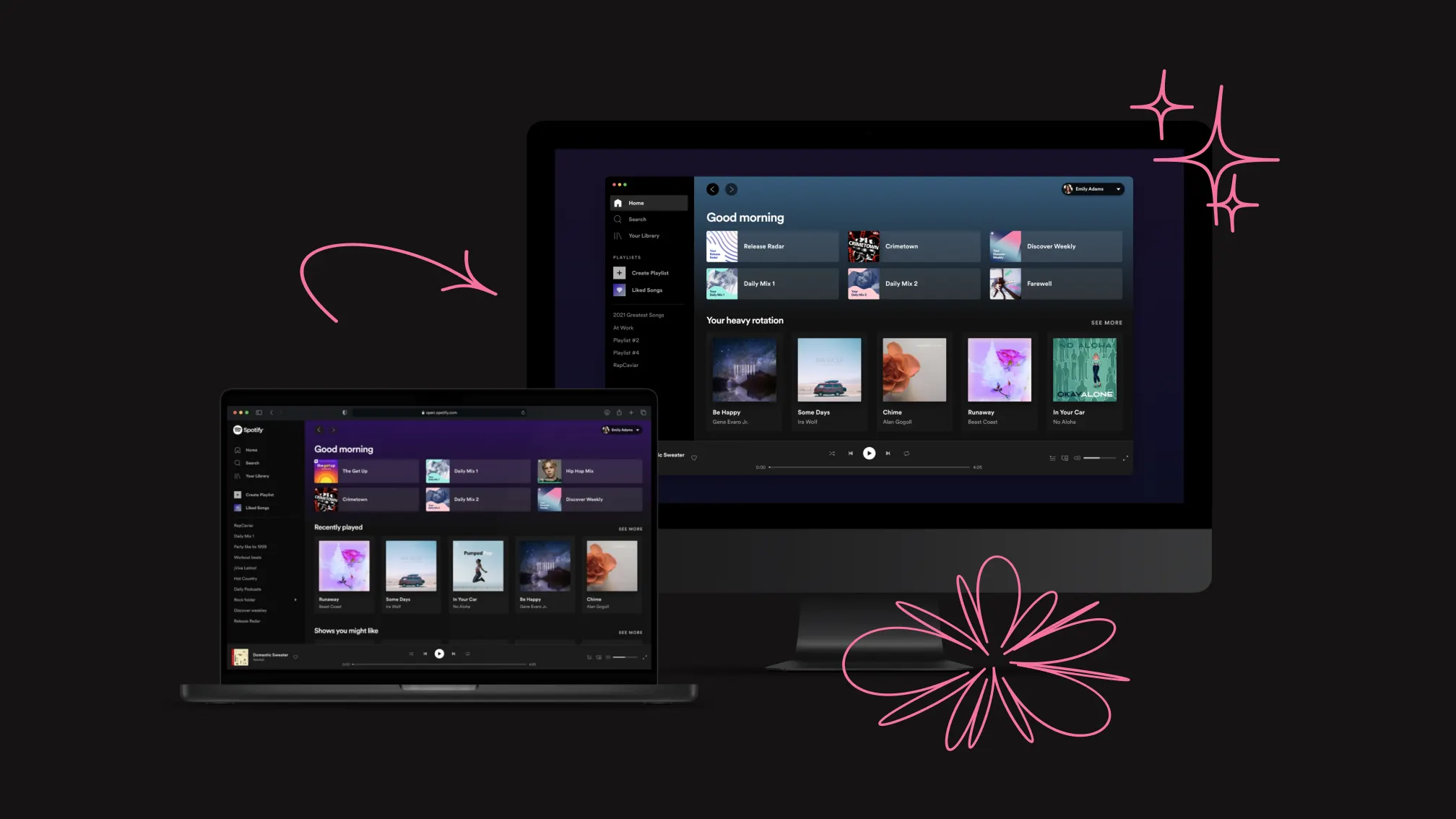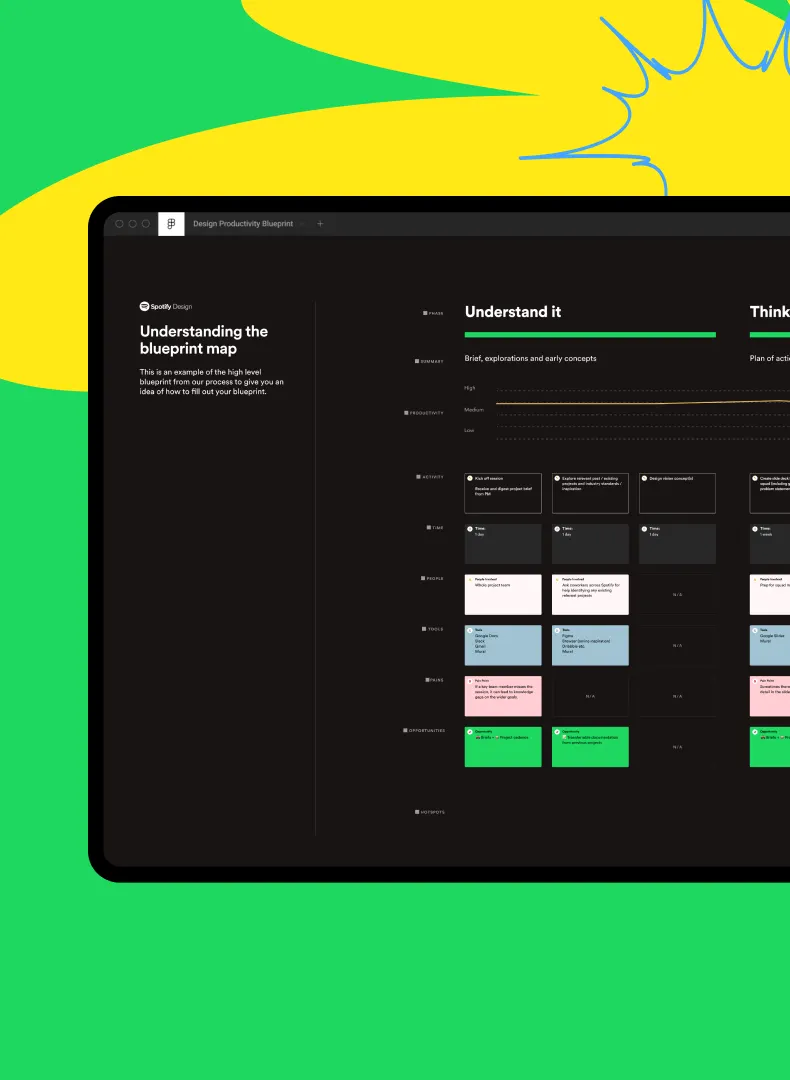Discover how expert user research is vital to meeting the needs of internal customers – and how Elsewhen helped music streaming giant Spotify put this into action.
Most organisations naturally expect digital technology to improve productivity and user experience for their employees. Yet many companies fail to understand what the actual needs and expectations of these internal customers are – providing them with digital tools and solutions that don’t align with the true requirement.
For this reason, it’s vital to view any prospective digital initiative through a user-centric lens – and to properly research the needs of your internal customers.
Providing tools and solutions that your users actually want
A common mistake with digital technology is to see it as just a way to manage your organisation’s existing processes more efficiently. While it can certainly do so, the true potential of digital transformation is to enable you to reimagine your ways of working – based around an improved understanding of user needs and preferences.
Working with a digital consultancy, you can learn from user interviews, focus groups and surveys to guide your initial vision. User testing and feedback sessions can further steer transformation around real-world user needs.

You need to map and understand complex non-linear user journeys and behaviour patterns. By consolidating and democratising data across your organisation to generate actionable insights, you can be ready to give your users exactly what they want – at the right time.
Thinking beyond process and technology improvements
When embarking on digital transformation, it’s easy to end up reinventing the wheel – by simply digitising your existing business processes. At the other extreme, some organisations get so carried away by the technology possibilities that they build a state-of-the-art solution – without checking if users actually need it. These problems come from thinking in a solely tech-focused way.
Your consultancy can help you approach digital transformation from a more user-centric perspective – by flipping the viewpoint around. Rather than seeing the user only in the context of your business process or technology, you should think of your offering as just one potential part of the user’s wider digital ecosystem. This ecosystem contains not only your solution, but also countless other entities competing for the user’s time and attention.
With this role reversal, you start to think in terms of how you can provide more benefit to the user – and become an increasingly important and valued part of the user’s digital ecosystem.

User-centric digital transformation in action
Here’s a real-world example of how Elsewhen worked with a leading organisation to undertake expert user research and drive user-centric digital transformation.
Spotify is the world’s largest streaming music provider. While music fans are familiar with Spotify’s beautifully designed front end and client apps, the business also relies on complex back-end core infrastructure to power its platform.
Recently, Spotify’s core infrastructure team asked Elsewhen to undertake a 10-week research project into improving the user experience for its engineers when working with the platform’s backend systems.
Understanding the demanding needs of internal customers
Spotify’s core infrastructure team is responsible for the overall back-end experience for its engineers as they build and scale features and services. With a fast-growing population of multi-disciplinary engineers, the team asked Elsewhen to conduct user-focused research, to help them better serve these internal customers.
While primarily creating tools for engineers, Spotify’s core infrastructure team felt they did not have a sufficiently deep understanding of the everyday needs of these internal customers. This was potentially impacting the relevancy of the back-end tools to their users.
We focused our research on three key end-to-end user journeys – for system creation, augmentation and maintenance – as well as a range of ‘micro-journeys’, such as provisioning storage, databases, compute and networking.
With better recognition and understanding of user needs, challenges and pain points in these areas, the team wanted to acknowledge, prioritise and address the key issues.
Helping users share their biggest pain points and challenges
Our team began the first discovery phase by immersing ourselves in the Spotify engineering environment to understand the context of the task. We then moved to planning our interview sampling strategy. We identified and prioritised categories of engineers to target in the research. We then conducted 30 user and stakeholder interviews. To maximise the value of each interview, we created interactive discussion boards in FigJam, focused on the top user pain points – and the biggest issue they would fix if given a magic wand.
We recorded the findings from these interviews into a Notion database, identifying a total of 99 individual user insights, each rated with a ‘pain index’ score. We then abstracted these to a higher level, clustering and synthesising them into 8 key themes.

Analysing user interview data for themes and opportunities
The second phase kicked off with a prioritisation workshop to identify the highest priority themes – which proved to be around data monitoring, migration and abstraction. Opportunities to address these issues were rated using the RICE (reach, impact confidence and effort) framework.
We mapped theme relationships, analysed Jobs To Be Done (JTBD), recorded engineer pain points, and created a detailed core persona of the internal customer. We also gathered findings and insights into a variety of interactive digital ‘artefacts’ for Spotify’s ongoing reference and investigation. These included an opportunity toolkit to guide future brainstorming workshops, and an analysis of Spotify engineer discussions of back-end topics on Slack.
We concluded the project with workshops to turn the themes and issues we found into opportunities and OKR (objectives and key results) targets, which Spotify’s team could then take forward. We also provided a final share-out deck with an executive summary of our findings, and ran a follow-up survey of engineers to gather further insights.
Supporting strategic improvement with actionable insights
We helped Spotify visualise the current state of play for their back-end experience, envisage a picture of a better future – and figure out how to get there. We distilled all the interview data into real-world user stories that bring the issues to life – so Spotify could take action on their hypotheses, armed with solid evidence.
Our research findings helped Spotify’s core infrastructure team redefine its OKRs for the year ahead – and shape its planning sessions around the needs of internal customers. This enabled the Spotify team to define and justify their investment and focus areas over the next 6 and 12 months.

